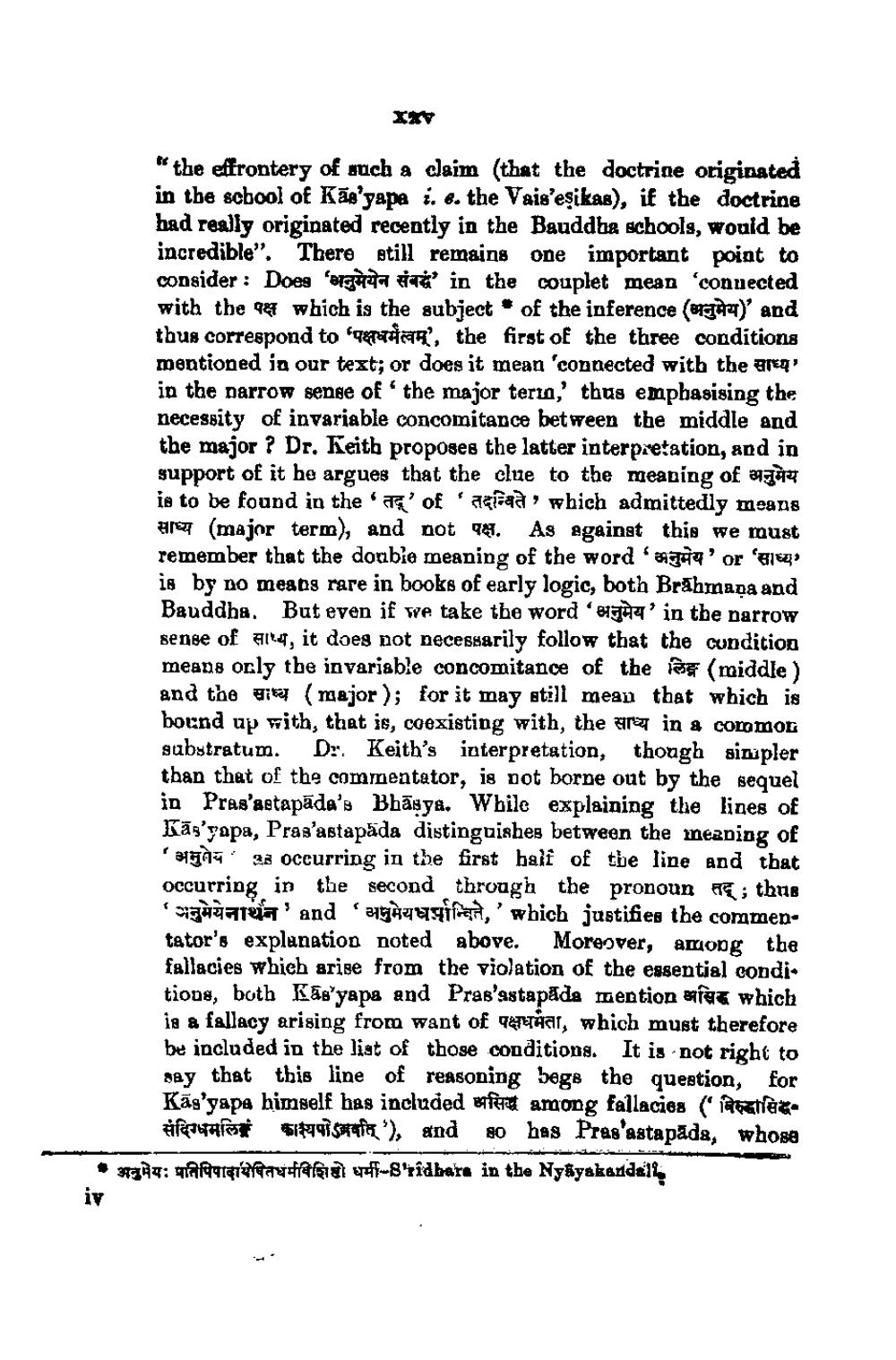________________
* the effrontery of such a claim that the doctrine originated in the school of Kāa'yapa i. e. the Vais'eşikas), if the doctrine had really originated recently in the Bauddha schools, would be incredible". There still remains one important point to consider : Does 'erganta sint in the couplet mean 'connected with the 997 which is the subject * of the inference (orgara) and thus correspond to what's the first of the three conditions mentioned in our text; or does it mean 'connected with the area' in the narrow sense of the major terra,' thus emphasising the necessity of invariable concomitance between the middle and the major ? Dr. Keith proposes the latter interpretation, and in support of it he argues that the clue to the meaning of angaa is to be found in the Philofacialwhich admittedly means
1 (major term), and not 987. As against this we must remember that the double meaning of the word ' da' or 'histo is by no meabs rare in books of early logic, both Brahmana and Bauddha. But even if we take the word ' n' in the narrow sense of any, it does not necessarily follow that the cundition means only the invariable concomitance of the loss (middle ) and the it (major); for it may still mean that which is bound up with, that is, coexisting with, the 12 in a coromor substratum. Dz. Keith's interpretation, though sinipler than that of the commentator, is not borne out by the sequel in Pras’aetapāda's Bhāsya. Wbile explaining the lines of Rās’yapa, Pras'astapäda distinguishes between the meaning of 'B ' 28 occurring in the first half of the line and that occurring in the second through the pronoun ; thuis i signaatea' and 'ataqugin,' which justifies the commentator's explanation noted above. Moreover, Among the fallacies which arise from the violation of the essential condi. tions, both Kas’yapa and Prab'astapāda mention was which is a fallacy arising from want of war, which must therefore be included in the list of those conditions. It is not right to say that this line of reasoning begs the question, for Kās'yapa himself has included saffrance among fallacies ("larations
Ffestation 49415Haka), and 80 has Pras'astapāda, whose xha: naftaranekerauffisant 4-8'ridbars in the Nykyakandall
iv




